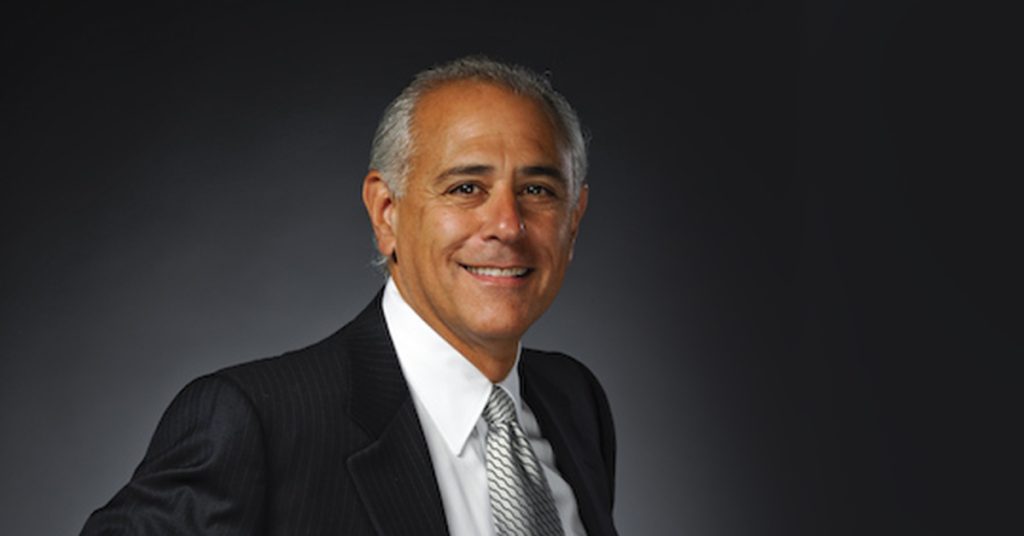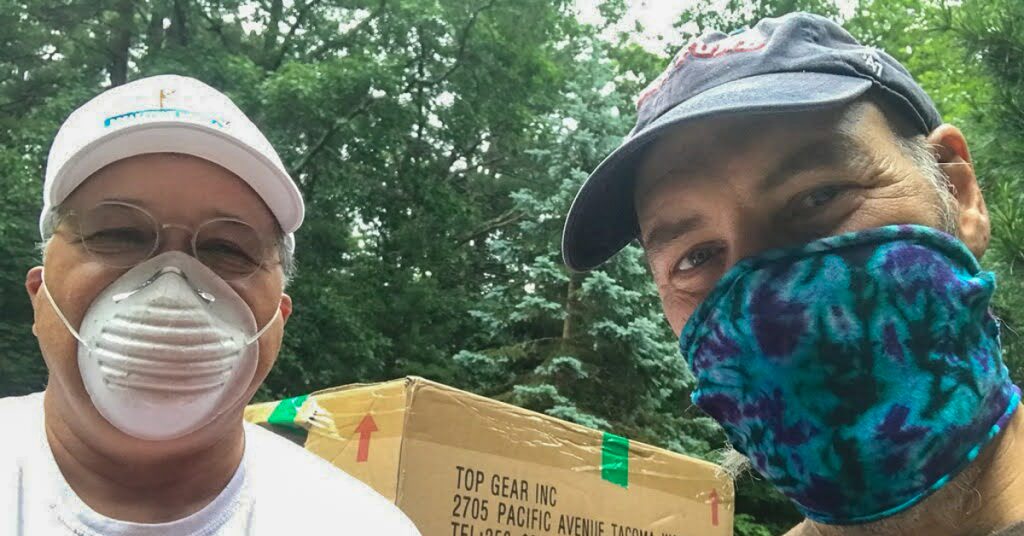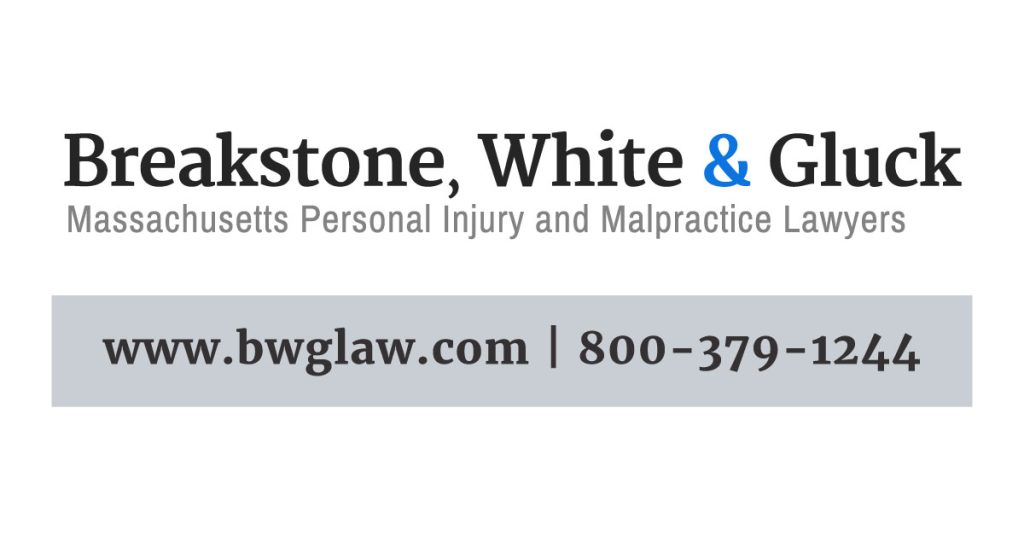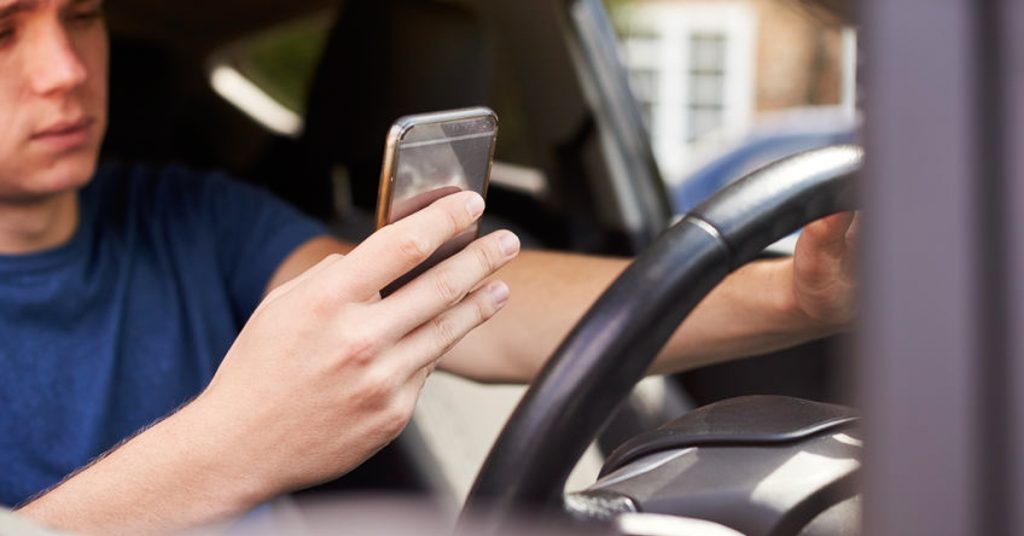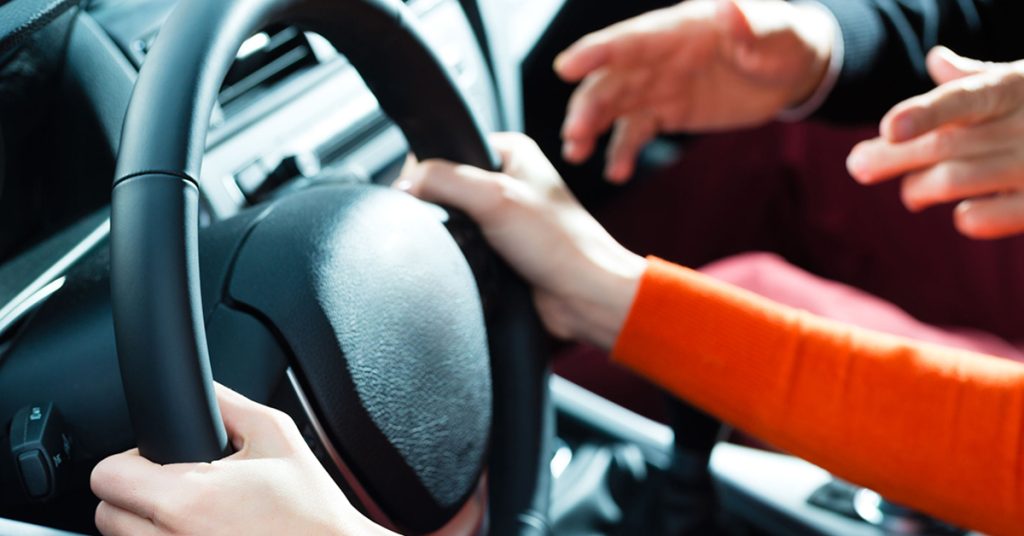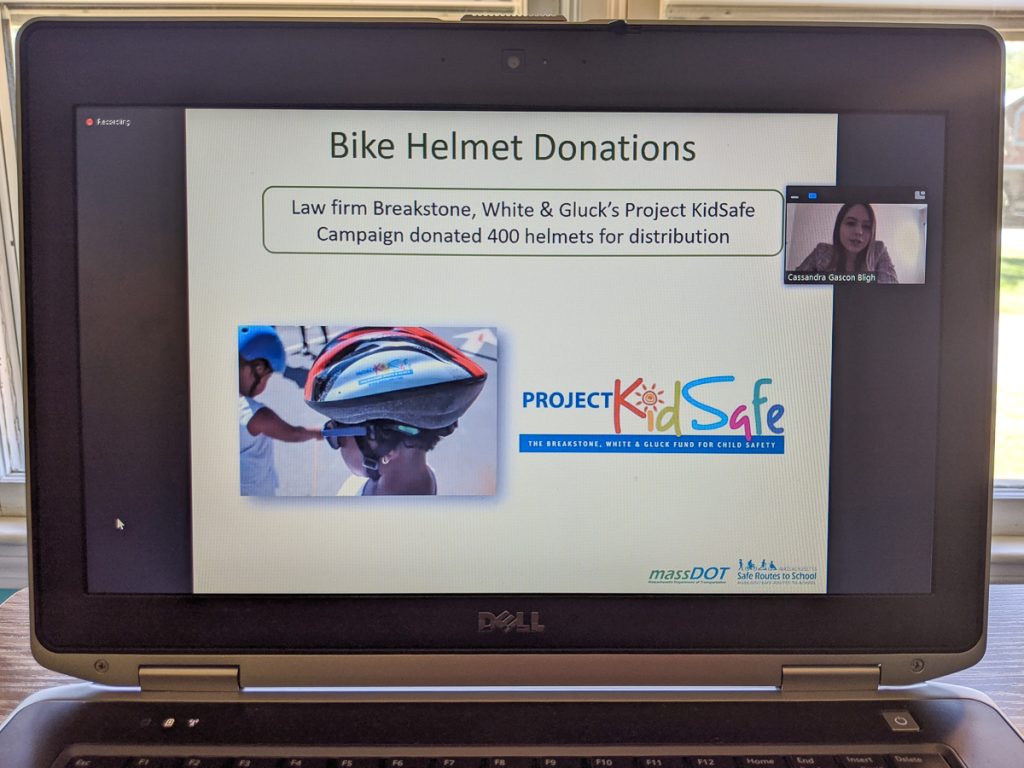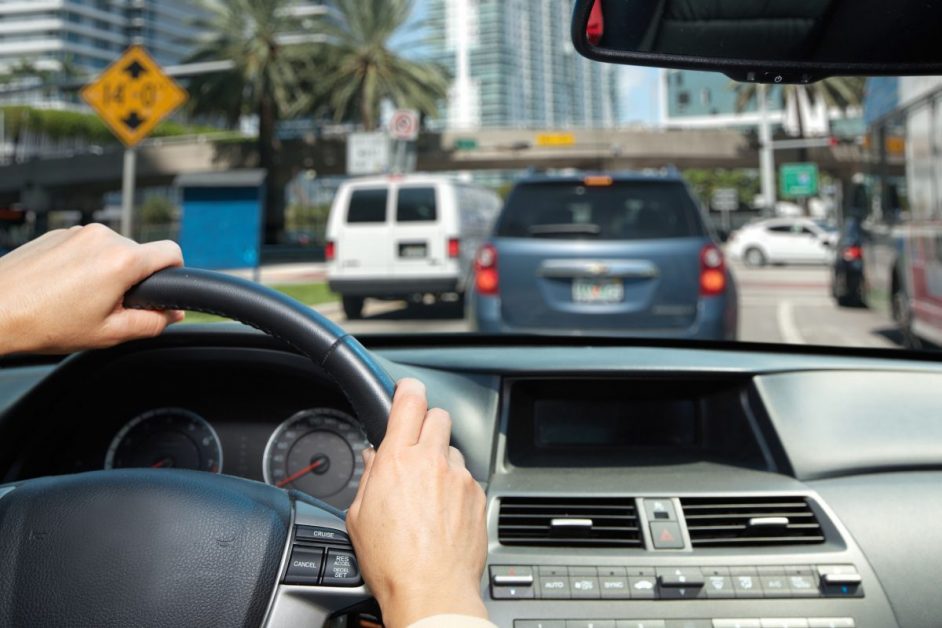Posts by Breakstone, White & Gluck
Attorney Ron Gluck Warns Boston Cyclists About the Risks for “Right Hook” Truck Crashes
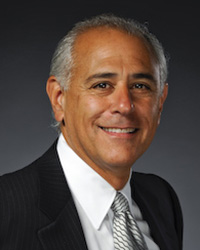
Attorney Ronald E. Gluck writes about the risk of right hook accidents in this month’s WheelPeople, the Charles River Wheelers’ newsletter.
Attorney Gluck has extensive experience representing Boston-area cyclists who have been injured when truck drivers make unsafe “right hook” turns at intersections or driveways. In this month’s article, he discusses a truck driver’s responsibility to yield to cyclists in Massachusetts. He also writes about his own experience investigating right hook crashes for his clients. Then he offers safety reminders for cyclists, urging them to “keep a watchful eye” on large trucks.
“My experience tells me that right hook “accidents” are almost always avoidable if both the driver and cyclist keep a watchful eye out on the other,” he says.
Read the article, “Watch Out! Trucks and Right Hooks.”
Breakstone, White & Gluck Partners with The Bike Connector to Protect Lowell Students on Bikes
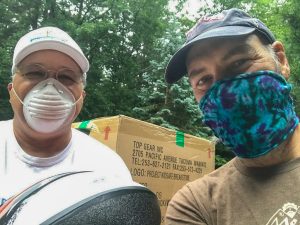
Attorney David W. White and Wade Rubenstein, president of The Bike Connector in Lowell.
Attorney David W. White was pleased to deliver 100 bicycle helmets to Wade Rubinstein of The Bike Connector in Lowell this morning. Breakstone, White & Gluck donated the helmets as part of our 2020 Project KidSafe campaign for bike safety.
This was our first donation to The Bike Connector and it was a real pleasure to meet Wade and learn about his work. The Bike Connector provides bikes to income-disadvantaged youth and immigrants throughout the city of Lowell. This summer, The Bike Connector is working with the city’s high school summer programs to distribute 100 free refurbished bikes. Now, each cyclist will also receive a free Project KidSafe bicycle helmet from Breakstone, White & Gluck.
The bicycles are important donations. In Lowell, there is no school bus service for high school students. Students can ride the Lowell Regional Transit Authority, walk or get a ride. Bicycles open up new opportunities for students to stay connected and on track with school activities.
“These helmets are really going to help keep kids in Lowell safe,” Wade said. “I want to thank Breakstone, White & Gluck for providing us these helmets. They are going to go a long way.”
Learn more about Breakstone, White & Gluck and our Project KidSafe campaign.
FDA Warns Public About Dangerous Hand Sanitizers
In Massachusetts, we are washing our hands and using hand sanitizers as much as we can. We all want to do our part to prevent the spread of COVID-19. But now, it’s time to check your supply of sanitizer. The Food and Drug Administration (FDA) is urging the public to steer clear of nine brands because they contain methanol, a toxic substance.
Methanol is often used in industrial settings, where high concentrations of methanol vapor can lead to poisoning, according to the Centers for Disease Control and Prevention (CDC). It is also called wood alcohol and is highly flammable.
Methanol can also be harmful when you handle it or absorb it through your skin, according to the FDA. The greater risk, though, is children or adolescents who may drink or ingest hand sanitizer. Certain adults may also be at risk or may have consumed the clear liquid accidentally. Parents and caregivers should respond immediately if they suspect a methanol hand sanitizer poisoning.
The hand sanitizers identified by the FDA show particularly high levels of methanol. Testing found one product contacted 81 percent methanol and no ethanol.
The FDA had asked Eskbiochem SA de CV of Mexico to remove the hand sanitizers from the market last week. When there was no response, the FDA issued its public warning on Friday (June 19, 2020).
The FDA advises consumers to avoid these hand sanitizers:
- All-Clean Hand Sanitizer (NDC: 74589-002-01)
- Esk Biochem Hand Sanitizer (NDC: 74589-007-01)
- CleanCare NoGerm Advanced Hand Sanitizer 75% Alcohol (NDC: 74589-008-04)
- Lavar 70 Gel Hand Sanitizer (NDC: 74589-006-01)
- The Good Gel Antibacterial Gel Hand Sanitizer (NDC: 74589-010-10)
- CleanCare NoGerm Advanced Hand Sanitizer 80% Alcohol (NDC: 74589-005-03)
- CleanCare NoGerm Advanced Hand Sanitizer 75% Alcohol (NDC: 74589-009-01)
- CleanCare NoGerm Advanced Hand Sanitizer 80% Alcohol (NDC: 74589-003-01)
- Saniderm Advanced Hand Sanitizer (NDC: 74589-001-01)
The agency advised consumers to carefully inspect sanitizers in their home before use and immediately dispose of these in appropriate hazardous waste containers. Consumers should not flush sanitizer or pour it down the drain. Read the FDA notice.
Symptoms of Methanol Poisoning
Methanol exposure can lead to methanol poisoning and severe symptoms, starting with nausea, vomiting, headache and blurred vision. In the worst cases, those exposed can suffer permanent blindness, seizures, comas or permanent damage to the nervous system. Methanol poisoning can also result in death.
How Safe is Your Hand Sanitizer?
Hand sanitizer was in short supply for months. But you can now probably find your own bottle. If you use hand sanitizer, make a point to carry your own. Carefully read the label and regularly check the FDA website for recalls.
Hand sanitizer is a clear gel. It all looks the same, but each brand has a different alcohol content. For instance, your small pocket sanitizer probably has less alcohol than a nursing home or hospital, which has to meet greater fire safety regulations.
Our point is it would be hard to tell if you were being offered sanitizer with a high level of methanol or any dangerous substance. It’s better to control your own supply. Read about the FDA’s work to ensure the safety of hand sanitizers.
Wash Your Hands Safely
The FDA reminds consumers to regularly wash their hands often with soap and water for at least 20 seconds. When soap and water are unavailable, the CDC recommends an alcohol-based hand sanitizer which contains at least 60 percent ethanol. Visit the FDA’s website to learn more about hand sanitizer safety.
Free Legal Consultation – Boston Personal Injury Lawyers
Breakstone, White & Gluck has extensive experience representing those injured by defective products, including those which contain toxic chemical substances.
Manufacturers of cleaning supplies, hand sanitizers and detergents have a responsibility to produce safe products and conduct thorough testing before distribution. End users, including restaurants, industrial workplaces and labs, also have a responsibility to follow safety guidelines when using chemical products. Mishandling chemicals can lead to chemical exposure, fires or serving clients unsafe food and beverages.
If you have been injured by a chemical exposure or explosion, learn your legal rights. For a free legal consultation, contact Breakstone, White & Gluck at 800-379-1244 or 617-723-7676. You can also use our contact form.
Distracted Driving Laws Are Saving Teen Lives, Research Says
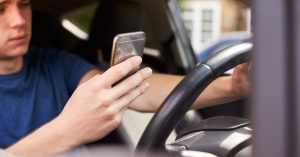
Distracted driving laws are reducing teen driver crashes, study says.
When drivers use cell phones, they introduce grave dangers to the road and are more likely to crash. This is why many states have now passed distracted driving laws. But how effective have these laws been?
Highly effective, suggests new research. Distracted driving laws are saving the lives of both teen drivers and their passengers in car crashes. The greatest impact is seen when states ban all drivers from cell phone use, not just junior operators under age 18.
Researchers at Massachusetts General Hospital published the findings from a 10-year study in Pediatrics journal. Reviewing more than 38,000 motor vehicle crashes reported between 2007 and 2017, researchers found a significant decrease in fatal motor vehicle crashes among drivers age 16-19.
There was actually a 43 percent reduction in deaths among 16-year-old drivers in states which passed hand held cell phone bans for all drivers (not just a ban for junior operators under 18).
Researchers had the challenge of working with evolving cell phone laws. When the study began in 2007, just 15 states had passed one type of distracted driving law, often a texting while driving ban. By the end, researchers were reviewing the impact of multiple bans, including texting while driving bans (both primary and secondary), hand-held bans and bans on all types of cell phone use for drivers under age 18.
Distracted Driving In Massachusetts
Massachusetts distracted driving crashes are a serious concern, having caused the deaths of drivers as well as pedestrians and cyclists. Once drivers pick up a cell phone, it is hard to break their attention away. The younger the driver, the harder it can be and this makes it essential for teens to establish good habits from the start.
In Massachusetts, a high school student was the first to be criminally prosecuted for motor vehicle homicide, texting while driving and negligent operation of a motor vehicle, according to CNN. Police allege the 17-year-old Haverhill man exchanged nearly 200 text messages in the hours leading up to the fatal crash in 2011. The crash killed a 55-year-old New Hampshire driver and seriously injured his girlfriend, who was riding in his passenger seat. As the prosecutor said at sentencing, “there are no winners today.” He went onto say, “…in a split second, many lives are forever changed.”
The state of Massachusetts reported a 170 percent increase in distracted driving crashes between 2014 and 2016. Over the past few years, lawmakers and safety advocates negotiated proposals to pass a hands-free law or a ban on handheld cell phone use. This finally reached resolution in November 2019, taking effect in April.
Under the Massachusetts Hands-Free Law, drivers are no longer allowed to use hand-held cell phones. They must now use voice-activated technology. The goal is to reduce injuries by taking away the act of reaching for a phone and attempting to dial. However drivers must still use voice-activated cell phones cautiously. Drivers can still cause accidents when using voice-activated technology and can still be held liable if they cause someone’s injuries.
Teen drivers – Massachusetts junior operators under age 18 – are still not allowed to use hands-free cell phones under the new law.
Free Legal Consultation – Boston Car Accident Attorneys
At Breakstone, White & Gluck, our attorneys fight for the rights of those injured by negligent driving in Boston and across Massachusetts. With more than 100 years combined experience, we have a reputation for strong results for victims of car accidents, truck crashes and bus collisions.
If you have been injured, call our attorneys for a free legal consultation: 800-379-1244 or 617-723-7676 or use our contact form.
Breakstone, White & Gluck’s Project KidSafe Campaigns Supports Boston Area Police Departments
In June, Breakstone, White & Gluck and our Project KidSafe campaign were pleased to donate children’s bicycle helmets to the Quincy Police Department, Brockton Police Department and the Braintree Police Department.
Read about our donation to Quincy Police in the Quincy Sun newspaper.
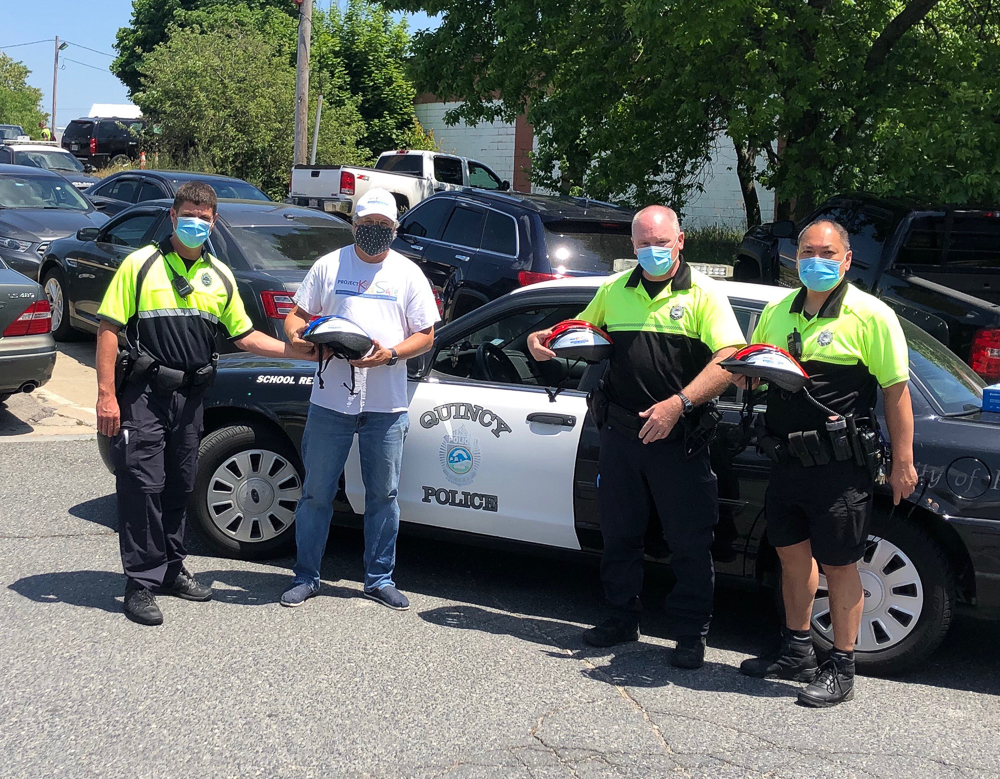
Breakstone, White & Gluck donated 200 children’s bicycle helmets to the Quincy Police Department, for distribution to local children in 2020. Pictured (L-R): Officer G. Hartnett, Atty. David White, Officer Whedbee and Officer Mar. Photo Courtesy Quincy Police Dept.
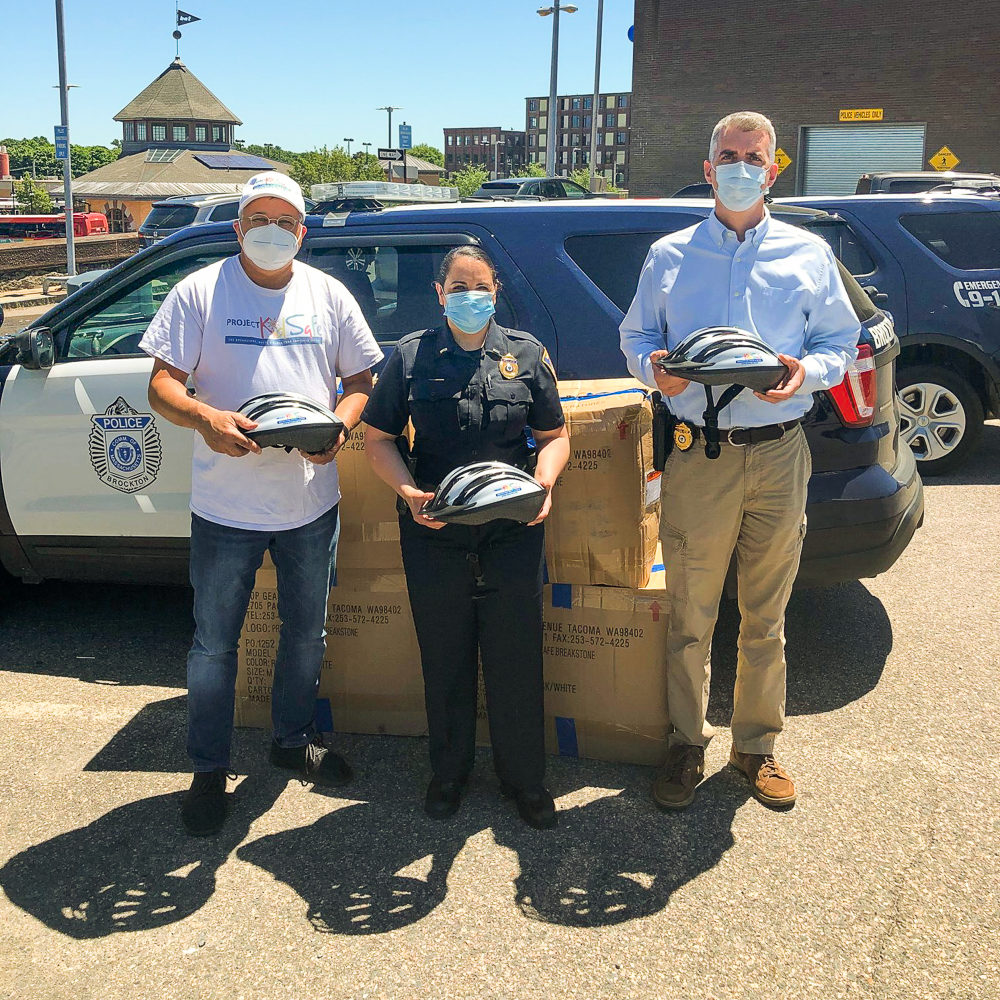
PHOTO COURTESY: Brockton Police Facebook– (From left:) Attorney David W. White, with Brockton Police Lt. Brenda Perez and Sgt. Will Schlieman
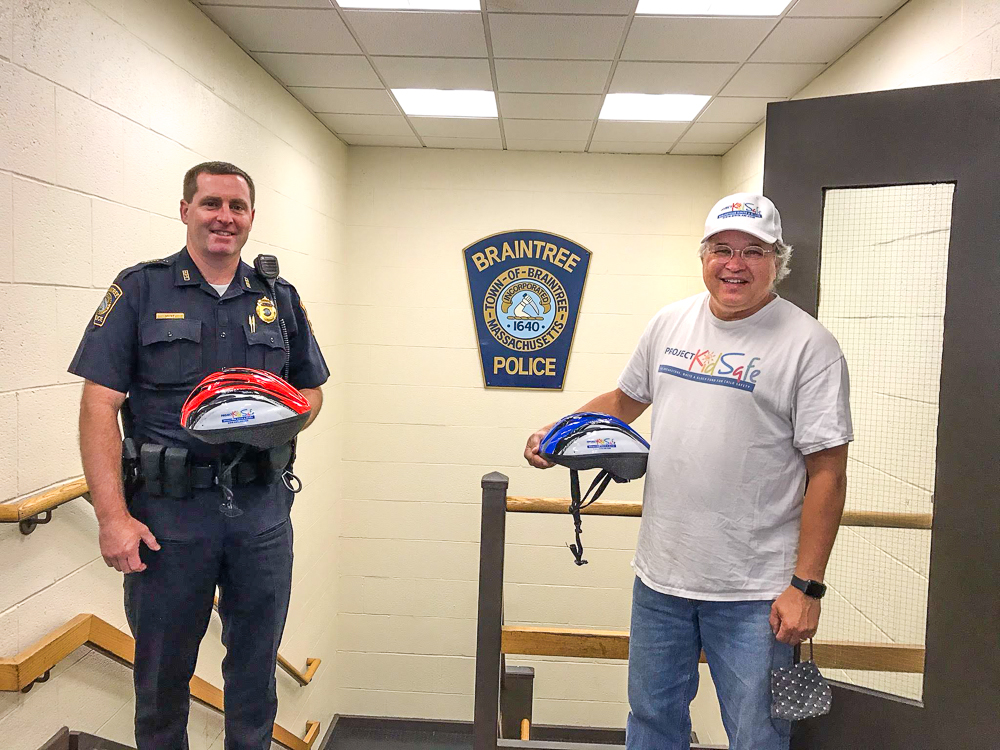
Left to right: Braintree Police Deputy Chief Michael Want receives Project KidSafe bicycle helmet donation and Attorney David W. White of Breakstone, White & Gluck.
About Breakstone, White & Gluck & Project KidSafe
Breakstone, White & Gluck is a top-rated Boston personal injury law firm serving all of Massachusetts. Our attorneys founded our Project KidSafe campaign in 2013, with a goal of protecting children from head injuries. Toward that goal, we have now donated 30,000 bicycle helmets to children in the Boston area, with help from more than 50 community partners.
Under Massachusetts law, cyclists who are 16 and younger are required to wear helmets to protect themselves. To learn more, we have posted a video and other materials on our website: www.bwglaw.com/project-kidsafe/.
Learn more about Breakstone, White & Gluck and our Project KidSafe campaign.
Study: Teen Driving Accidents Claim More Than 7 Lives Each Day of Summer
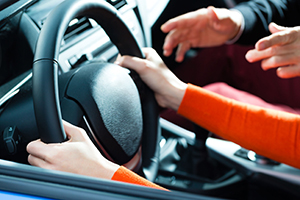 We know many Massachusetts parents regularly talk to their teens about safe driving to prevent car accidents. You should be commended for engaging in this often-stressful conversation.
We know many Massachusetts parents regularly talk to their teens about safe driving to prevent car accidents. You should be commended for engaging in this often-stressful conversation.
We urge you to continue on this summer. Helping teens understand the difference between appropriate and unsafe choices and build strong driving skills is a life-long investment in their safety and the safety of others.
Nationwide, teen driving crashes killed more than seven people each day of summer from 2008 to 2018, according to AAA Foundation for Traffic Safety. AAA recently released the 2020 “100 Deadliest Days” of driving report, once again warning teen drivers and parent to take extra precautions between Memorial Day and Labor Day.
Be aware of the unique risks this summer, AAA says. In response to the COVID-19 pandemic, many summer jobs and activities have been cancelled. With more free time, teens may be driving more. AAA urges parents to read its 2020 “100 Deadliest Days” report, and its Parent Coaching Guide, and to have teens sign a safe driving agreement. With this approach, parents can set clear expectations for teens and refer them to the agreement should they forget. If teens violate the terms of the agreement, they may lose driving privileges for a period of time.
Research on Teen Driving Crashes
Here are a few figures for parents to consider. AAA’s research found more than 70 percent of teen drivers age 16-18 had engaged in unsafe and illegal driving behaviors.
Seat belt Use
17 percent of teen drivers admitted to not wearing a seat belt.
Speeding
47 percent of teen drivers admitted to driving 10 mph over the speed limit on a residential street.
40 percent of teen drivers admitted to driving 15 mph on a freeway.
Texting and Cell Phone Use
35 percent of teen drivers admitted to texting while driving.
Other Driving Violations
More than 30 percent of teen drivers admitted to running red lights and aggressive driving. Meanwhile, 25 percent of teen drivers admitted to drowsy driving.
Parents can influence teens on some of these behaviors by developing a teen driving agreement (there are several available on the Teen Driver Source website). Your conversations with your teens are also essential.
Help Your Teen Drive Safely
Help your teen drive safely and avoid a car crash.
Many states have graduated licensing laws, including Massachusetts. Encourage your teen to follow the Massachusetts Junior Operator Law at all times. Under this law, teens are not allowed to use cell phones when driving in Massachusetts, not even under the new Massachusetts “hands-free” driving laws.
When they have a question, encourage them to ask, review their driver’s education materials or the Massachusetts Driver’s Manual. When drivers understand the law, they are more confident making decisions on the road.
Another opportunity is to drive together. Take turns in the driver seat. When you drive, take the opportunity to show your teen how you follow the speed limit. On a 30 mph street, this means driving 30 mph or less, not 35 or 40 mph. Tell your teen what you are doing and why.
Speed-related crashes are prevalent among teens. Simply slowing down and following other vehicles at greater distances can make a tremendous impact in reducing car accidents. At slower speeds, your teen has more time to stop and if they have a collision, injuries are likely to be less severe. Accident victims are more likely to survive a teen driving accident.
At the same time, parents should understand that when teens speed, they may be intentionally speeding and risk-taking. This is unacceptable. But often, the reason is driver inexperience. Teens need more practice using the gas and brakes, and you may need to explain that traveling “just” 5 mph or 10 mph over the speed limit is dangerous. In fact, you may need to do this a few times, also explaining that teens are more likely to cause injury when they speed and receive a speeding ticket which will impact their junior license.
To help your teen, be patient. Your goal is to demonstrate safe driving techniques and give them feedback when they make a good decision or make a mistake. Yet, if you are too critical, you will make your teen nervous and reluctant to drive with you. Tread lightly but firmly. It’s alright to take a break, but don’t stop trying.
Free Legal Consultation – Boston Car Accident Lawyers
At Breakstone, White & Gluck, our Boston car accident attorneys represent those who have been injured by negligent driving in Massachusetts. Car accidents often result in serious and catastrophic injuries, including head injuries, spinal cord injuries, broken bones, lacerations and death. When victims survive, they may require medical care, have to take time off from work and suffer other financial losses.
Always learn your legal rights after an injury. For a free legal consultation, call our car accident attorneys at 800-379-1244 or 617-723-7676. You can also use our contact form.
Protecting Children from Backyard Injuries and Hazards in Massachusetts
It is important to maintain your yard and keep it safe at all times. But this summer, as Massachusetts recovers from the COVID-19 pandemic, more people will likely spend more time at home. This means you must take extra care in protecting your home, your family and neighbors from common backyard injuries, such as falls, dog bite injuries and swimming pool accidents.
In Massachusetts, homeowners have a duty to make a reasonable effort to keep their property reasonably safe so lawful visitors are not injured. When a homeowner fails to maintain their property and someone is injured, this may result in a premises liability claim.
When children are involved, homeowners have a greater duty. Under attractive nuisance laws, property owners may be held liable if a young child is injured by an unsafe condition on their property, even if the child is trespassing. These laws recognize that children may not understand potential dangers or that they are trespassing.
Massachusetts Attractive Nuisance Law
M.G.L. c. 231, § 85Q states that a person who maintains an artificial condition upon his own land shall be liable for physical harm to children trespassing thereon under certain conditions.
A landowner can be held liable in part if they knew a child was likely to trespass or reasonably should have known, and if the landowner knew or reasonably should have known there was an unreasonable risk of death and serious bodily harm to children.
Protect Your Front and Backyard This Summer
Protect Your Pool

Property owners have a responsibility to lock and secure pools to prevent neighborhood children from falling in.
In Massachusetts, homeowners must enclose pools with fences which are a minimum of four feet and taller if necessary for safety. The fence should have a self-latching, self-closing gate and lock at least four feet off the ground. These requirements are meant to protect young children, as well as your lawful guests by slowing access down to your pool. A few steps you can take to secure your pool:
How old is your pool lock? Carefully inspect the integrity of your pool lock.
Inspect your fence. The Consumer Product Safety Commission published this pool safety guide on different types of fences and key specifications, such as how much space you should have between and under the fence panels. See page 6.
Consider a pool alarm. Your fence is your primary defense to keep young children out of your pool. Children can move quickly and drown silently, before you even know they have found their way into your pool. An alarm can help you respond quickly.
Think “layers of protection.” Planting large shrubs in front of your pool fence is one way to slow children down; another added benefit is children won’t be able to see the pool and are likely to forget about it.
At the end of the day: Cover your pool. Remove pool ladders and floats from the pool area and out of sight of children.
Restrain Your Dog

Young children are at risk for dog bite injuries if they wander onto a neighbor’s property.
As a dog owner, you have a responsibility to take care of your pet, including to feed it and make sure it gets proper exercise.
As a homeowner, you have a responsibility to restrain your dog. Under Massachusetts law, you may be held liable if your dog bites or attacks. Here are a few situations when homeowners may be liable for dog bite injuries.
First, you may be held liable if your dog bites a lawful visitor. You may also be held liable if you leave your dog alone outside and it runs off your property and injures a passerby.
Then there are young children. Too young to realize the consequences, they can wander onto your property without invitation and your dog may bite. You may not even see the child come onto your property. But this is another situation when a Massachusetts homeowner may be held liable for a child’s dog bite injuries.
Just like drownings, dog bites and attacks are a frightening and debilitating experience, for children as well as owners. Some describe it as the worst experience of their life. Many victims and loved ones suffer post traumatic stress disorder (PTSD).
What can you do to prevent a tragedy?
Invest in dog training. Hiring a trainer can help your dog master basic obedience skills.
Install a fence. Consider installing a regular fence around your yard. An invisible dog fence can be effective at keeping your dog on your property. However, it doesn’t prevent children from wandering onto your property. Fences can stop children or at least slow them down.
Remember you can’t predict how your dog will react. Many dog owners have said, “My dog is really good with kids,” just before the animal bites or attacks.
And the problem with young children in your neighborhood: a child may know you and your dog by name. They may routinely say hello when you walk your dog and have warm feelings about your pet. Your dog, however, may not feel or respond the same if the child approaches. If you have a dog, Breakstone, White & Gluck encourages you to secure and supervise your pet this summer. Remember, children are likely to be spending more time at home this summer and you may need to take additional steps.
If you have been injured, Breakstone, White & Gluck is experienced in representing young children and others after dog bites and attacks in Massachusetts. Please read our awards and settlements and contact us if we can assist you with a claim at 800-379-1244 or 617-723-7676.
$450,000 award: Child Suffers Facial Injury and Emotional Distress in Dog Bite Attack Details
$300,000 award: Elderly woman bitten by dog, which leads to infection, sepsis and wrongful death.
$150,000 award: Dog injures cyclist, causing bike crash and other injuries. Details
Use Your Backyard Shed
Pick up your yard each day. Pick up toys and bring in pool floats, accessories and towels so they don’t attract a child’s attention.
Certain toys, games and equipment should be used, then immediately locked away. These include portable pools.
To make this easier, keep a key to your backyard shed nearby at all times this summer. Put it in your cell phone case or on a lanyard around your neck so you can easily access your shed as often as you need.
Protect Your Backyard This Summer
2020 has been a challenging year. While we are all limited by Covid 19 this summer, these are steps we can all take to protect our families, neighbors and others from unnecessary injury, and to protect ourselves financially.
Free Legal Consultation – Boston Personal Injury Lawyers
At Breakstone, White & Gluck, our Boston personal injury lawyers specialize in premises liability claims, including those involving swimming pool accidents, dog bites injuries and child injuries. Learn more about our law firm: www.bwglaw.com.
Massachusetts Safe Routes to School Recognizes Project KidSafe Bike Helmet Donation
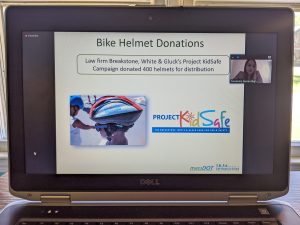
For the 6th year, Breakstone, White & Gluck and our Project KidSafe campaign are pleased to support Massachusetts Safe Routes to School. Once again, our attorneys have committed to donating 400 bicycle helmets to Safe Routes. From there, the Safe Routes coordinators will give the helmets to low-income children who want to participate in bike safety training and bike rodeos.
This morning, Massachusetts Safe Routes to School held its annual awards ceremony to honor schools and teachers which have excelled in reaching their walking and biking goals for children. Stephanie Pollack, secretary and CEO of the Massachusetts Department of Transportation (MassDOT), was the featured speaker. Before announcing the awards, Massachusetts Safe Routes to School thanked Breakstone, White & Gluck for our donation.
This is Massachusetts Safe Routes to School’s 15th anniversary. For those who don’t know, Massachusetts Safe Routes to School is a federally funded initiative of the MassDOT. Over 15 years, it has offered biking and pedestrian safety program to children in 237 communities and reached more than 420,000 students. Schools are committed to the programming. Safe Routes now has 920 partner schools. View this year’s awards list.
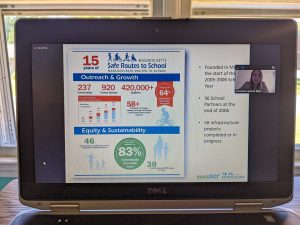 About Breakstone, White & Gluck – Commitment to Bike Safety
About Breakstone, White & Gluck – Commitment to Bike Safety
The Boston personal injury lawyers at Breakstone, White & Gluck are committed to safety and preventing head injuries. Through our Project KidSafe campaign, we have donated 30,000 children’s bicycle helmets across Massachusetts. We founded our campaign in 2013 and have since partnered with Massachusetts Safe Routes to School, local police departments, bicycle committees and community groups. Our goal has been to work with community partners who really care and are committed to bicycle safety and preventing head injuries.
In Massachusetts, cyclists under age 17 must wear bicycle helmets. But every cyclist is encouraged to wear a helmet. We hope you are never injured on a bike, but you can recover from many injuries. Head injuries can be fatal and it is important to protect yourself.
Commit to wear a bicycle helmet every time you ride. Helmet use has been estimated to reduce the chances of head injury by 50 percent and the chances of head, face or neck injury by 33 percent, according to the Insurance Institute for Highway Safety.
Attorney Ron Gluck Writes: “Underinsured Motorist Coverage: Protect Yourself and Your Family”
Attorney Ron Gluck recently authored an article, “Underinsured Motorist Coverage: Protect Yourself and Your Family,” which was published in the Charles River Wheelers newsletter, WheelPeople. He writes that readers may be surprised to learn this coverage can protect every member of their household when driving, riding as a passenger or even outside a vehicle, when cycling, walking or going for a jog. But there are a few essentials to understand before you buy.
Learn more about Attorney Ron Gluck.
More Than Half of All Car Crashes Happen in Intersections
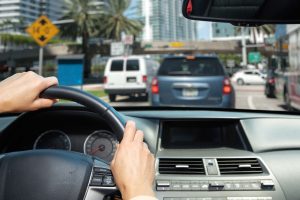
Practicing safety at Massachusetts intersections.
If you traveled to Cape Cod or the North Shore this Memorial Day weekend, you most likely crossed many intersections and maybe a few rotaries.
Our Boston car accident attorneys want to take a moment and write about traveling safely through Massachusetts intersections. This is a fundamental, one of the first lessons for student drivers. Yet the reality is, more than 50 percent of all traffic crashes resulting in injuries or death occur in or near intersections, according to the U.S. Federal Highway Administration.
Intersections can be challenging. Drivers can make mistakes. Large trucks can take wide turns, causing serious accidents. And some intersections need improvements.
But often, accidents happen when drivers stop at traffic signals and just stop paying attention to the road. They may be fatigued; their thoughts may wander elsewhere. When traffic starts moving again, the driver may step on the gas without checking for pedestrians, cyclists or traffic around them.
Then there are outright reckless actions. Unfortunately, these endanger everyone in the intersection. These drivers are aggressive and may speed or drink and drive. These drivers may be cited for speeding and other traffic violations, but they can also be criminally charged for their actions. When a driver causes personal injury or death in Massachusetts, they may also be held liable for the victim’s injuries.
Massachusetts Laws for Driving Through Intersections
Travel Slowly. As a driver, always travel slow enough to stop or yield to pedestrians, cyclists and other vehicles. You also have to remember other bystanders on sidewalks, such as foot traffic from restaurants and shops. Be prepared for them to make an unexpected move.
Right of Way at Intersections. As a driver, you must understand when you have the right of way and when you have to yield in intersections. You can find some of the rules contained in M.G.L c. 89 § 8. As for right of way, when two vehicles arrive at an intersection at the same time, the driver on the left shall yield the right-of-way to the vehicle on the right.
Drivers must also yield to other vehicles before turning left. When stopped at a steady red light, drivers can make either a right turn or on a one-way street, they can make a left turn to another one way street. They must yield the right-of-way to pedestrians and other traffic as directed by the traffic signal.
Yielding to Cyclists. Drivers may only turn right if they can do so at a “safe distance from the bicyclist at a speed that is reasonable and proper,” according to M.G.L. c 90 § 14.
When drivers turn right near cyclists, there is a high risk for a right hook crash. As best practice, before making a right turn, drivers should fully check around their vehicle, including behind. They should make use of their rearview and sideview mirrors.
If there is a cyclist, they are most likely to be in the bike lane to your right (though in Massachusetts, cyclists are also allowed to travel in the traffic lane in front or behind you). Yield to them and let them turn right first. You want to keep the cyclist well ahead of you. Then travel slowly because there may be other cyclists nearby.
When drivers turn left, conditions are different. Drivers are most likely to encounter a cyclist coming from another direction. They can avoid a bicycle crash by continuing to scan the intersection and waiting until there are no cyclists.
Yielding to Pedestrians. Pedestrians are safest at intersections marked with crosswalks and traffic signals, which provide “Walk” lights. Drivers must stop at these traffic signals. M.G.L. c 89 § 11.
The best way to avoid a pedestrian accident is to stay well behind the crosswalk line and stay alert throughout the light. Do not check your cell phone, even in hands-free mode.
Put Down Your Cell Phone. Under the new Massachusetts hands-free law – or M.G.L. c 90 § 13B – drivers are not allowed to pick up their cell phones, including at stop signs or traffic signals. Drivers are allowed to use voice-activated technology, but we urge you to set your cell phone and all in-car systems aside. Let calls go to voicemail. Instead, use this time to check traffic conditions around you and get ready for the green light.
Read your Massachusetts Driver’s Manual. While this won’t make your summer reading list, the Massachusetts Driver’s Manual is available online. As a Massachusetts driver, you can access this anytime you have a question. We suggest reading page 111, which explains the Dutch Reach method for safety near cyclists and how to prevent a dooring injury to a cyclist. This is worth noting because cyclists and pedestrians may be traveling in different areas over the next few months as Massachusetts recovers from COVID-19.
About Breakstone, White & Gluck
Since 1992, our Boston car accident lawyers have represented victims of negligent or reckless driving, helping them recover financial compensation for injuries, lost wages, pain and suffering and other damages. We represent those injured in the Boston region, including in Boston, Cambridge, Somerville, Everett, Lynn, Quincy, Newton and Watertown. We also represent clients injured in Cape Cod car accidents.
For a free legal consultation, contact Breakstone, White & Gluck at 800-379-1244 or 627-723-7676. You can also use our contact form.


